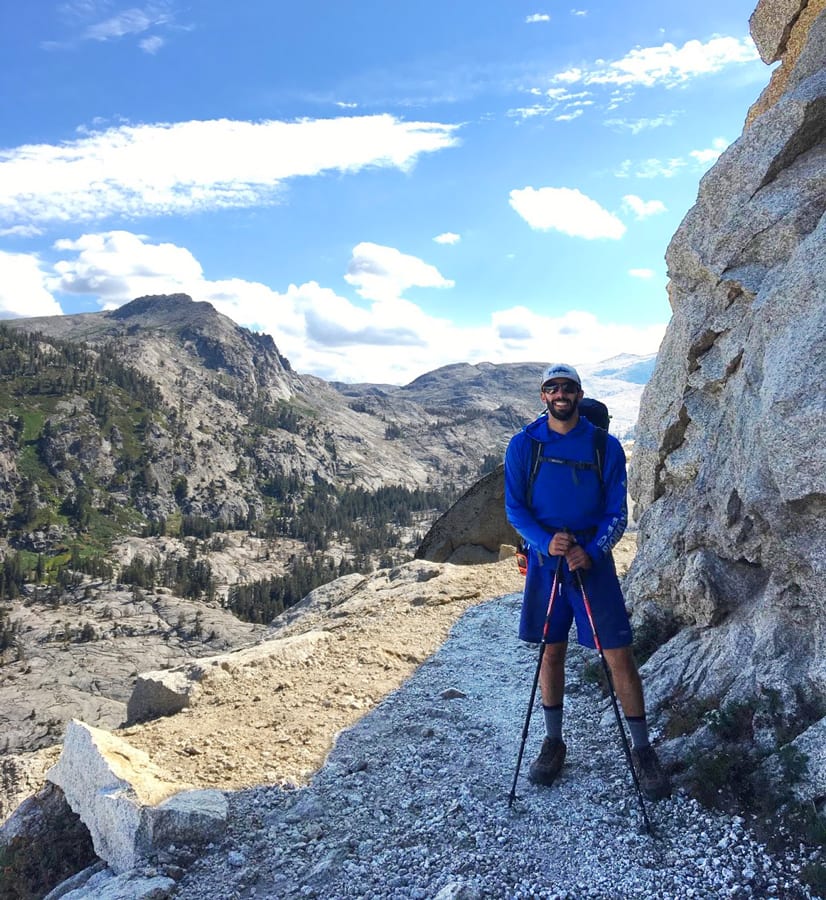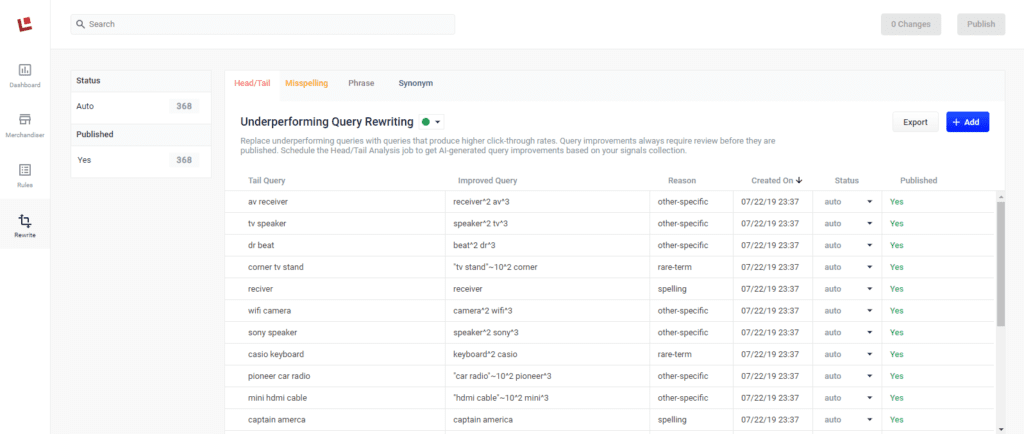When In-Person Shopping Isn’t an Option, Actionable Ecommerce Metrics Are a Requirement
Second post in a series focusing on delivering powerful digital experiences in a time where in-person interactions are on pause. Learn how Predictive Merchandiser puts actionable analytics in the hands of merchandisers.

My colleague, Justin Sears, recently authored a post about digital experiences replacing real-life interactions. He cited measuring performance as a pillar to success for powerful online experiences. During the COVID-19 crisis, we are seeing dramatic shifts in metrics which can be misleading, making it difficult for teams to create appropriate solutions to improve the digital experience.
Most ecommerce metrics are not actionable; they’re high level and removed from context which makes it difficult to trace back to drivers. For example, if conversion and AOV are deviating from the trend, is it a function of a new marketing event or a recent UX change or improvements to search? Or something totally out of our control like a global pandemic?
What is clear is how critical every session is and how important it is to maximize revenue per user. Predictive Merchandiser on Lucidworks Fusion helps teams put the power of actionable and contextual analytics into the hands of merchandisers to understand shopper behavior, instantly adjust the experience, and provide the benefits of a real-life interaction, online.
Mechanics of an In-Store Experience
Last summer I went into a sporting goods retailer to pick up some new hiking boots for my Mt. Whitney training and summit attempt. Mt. Whitney is the tallest mountain in the lower 48 sitting at 14,505’. When I arrived at the store I headed over to the shoe department, where I was greeted by an employee who showed me to the hiking boot wall. As we walked over I began to tell her that I won the permit lottery and would be hiking Mt. Whitney in three months. Over the next three months I would plan to hike 150 miles, plus the 22 miles on the Whitney trail. We agreed that a waterproof, over-the-ankle boot would be best, and a perfect fit was required.
The employee pointed to a few boots on the wall that she thought were solid candidates. Aside from the really expensive pair, I agreed and asked for her to bring out some sizes for me to try on. After trying some on and explaining how they fit, sizing up and down, we finally found a perfect fit in my budget. Off to the register to pay and to the trail I went to break them in. Couldn’t be happier with these boots.

Being a digital commerce professional, with years of retail experience, I often shop in stores to understand how we can bring those in-store experiences online, to figure out what commerce sites are missing, and how we can capitalize on the opportunities at hand.
Let’s take a look at this shopping experience from an in-person, in-store, and data perspective:
- As I walked through the store I was able to easily navigate my way to the shoe department.
- While interacting with the employee I was providing signals about my needs, requirements, and interests.
- If we look at the other shoppers in the shoe department, they were also providing signals throughout their shopping experience. They were likely using different vocabulary and expressing their needs in different ways.
Luckily the employees are able to ask clarifying questions and understand the shoppers’ intent. If we step back a little further, the other hundred or so shoppers in the other departments of the store were following suit. Providing signals and feedback and drilling down to the products they want to purchase.
This is happening on commerce sites 24/7. If you’re not listening to those signals, aggregating them in context, and adjusting your site experience, you’re letting shoppers walk out the door to head down the street to your competitors. Using machine learning and search, merchandisers can uncover trends and optimize performance on the fly.
Machine Learning (ML) Jobs in Search
Thousands of shoppers are coming to your site daily, trying to explain to your search box what they are looking for. “Size 10 ½ waterproof hiking boot under $150”. Can your search engine handle this? And then the next shopper searching for “Hiking sneakers under $150 size 10.5”. Think about all the permutations of this conversation that happen in stores with employees who can translate and understand shoppers’ intent. Gone are the days of digging deep into your search logs to manually identify a few, of these thousands, searches to improve.
There are four different ML jobs that are constantly measuring and evaluating the performance of queries on your site. Synonym Detection, Head Tail Analysis, Misspelling, and Phrase Detection. Search managers and merchandisers can simply log in, review, approve, and publish. These jobs make it simple to scale with your traffic and shopper intricacies and surface that level of understanding which shoppers expect in a store, and an online, experience.

Take Action on Streaming Search Trends
Keeping up with what’s in high demand and what is broken, in real time, is crucial. Streaming analytics of top search queries, top clicked products, zero results, and top clicked searches are at the team’s fingertips with Predictive Merchandiser. Merchandisers now have insight to immediately intervene and salvage poor experiences and optimize results. Despite how prescriptive and prepared teams are, monitoring and adjusting is critical.
Predictive Merchandiser surfaces the surprises. Did a vendor or competitor launch a new product early and shoppers are coming to your site to look for it, and it’s not on your site? Are shoppers actually interested in the low-rise boot but you promoted the over-the-ankle? These streaming trend reports in conjunction with the merchandising tool box provide the business with the means to understand and adjust on the fly, in your largest store.
Understand Performance in Context
Building out merchandising presentations across hundreds of brick and mortar stores to showcase products involves a lot of time and energy. Similarly on the website, we present shoppers with an assortment of products that will get their clicks and add-to-carts, review high level performance metrics, and make directional adjustments, after we aggregate and clean up the data.
How do we measure their performance? Hint: it’s more than just conversions.
Retailers often miss a critical data point: insight into what shoppers searched for, clicked on, added to cart, and purchased. With Predictive Merchandiser the business has visibility into how shoppers are interacting with specific products in the assortment. The signal funnel, per product, and per context is powerful. Within minutes the presentation of products can be analyzed and adjusted without needing to involve IT. The merchandiser can “rebuild” the presentation by adding, removing, boosting, burying, or pinning products in different ways to optimize the performance and drive purchases.
Online Is the Biggest Store You Have
Retailers have spent decades optimizing the in-store experience. Knowledgeable employees, strategic floor plans, targeted assortments, and business analytics have been at the core of building successful businesses. At the end of the day, it is becoming more and more apparent that websites are companies’ largest store, which creates great opportunity and even greater risk. If we can’t provide that optimized in-store experience to shoppers online, we risk losing that sale and their next visit.
In critical times when site traffic and conversion are plummeting, every single shopper matters. Lucidworks has the tools to empower merchandisers to measure and understand the site’s digital performance and support every shopper in finding exactly what they need, as if they were in the store engaging with a real-life employee.
If you’re interested in learning more about how Lucidworks Fusion and Predictive Merchandiser support some of the world’s largest brands, drop us a line.
LEARN MORE
Contact us today to learn how Lucidworks can help your team create powerful search and discovery applications for your customers and employees.